To attempt to understand the roll of the CIA in world affairs, one must always keep in mind the era in which the CIA began to operate — the Cold War — that time after the end of World War II when Stalinist Russia was looking to expand its communist doctrine to any country that would listen to the sales pitch. The U.S. was sold on capitalism and was committed to stopping the spread of communism — sometimes at the ultimate cost. The beginning* Gathering intelligence about enemies real or suspected has been a part of the American fabric since the days of George Washington. Other countries undoubtedly have an intelligence file on the United States. This cat-and-mouse game is ostensibly intended to help countries prepare their defensive forces for invasion by foreign entities. However, depending on one's point of view, agencies operating in the gray area of international intrigue sometimes interpreted directives from the top levels of government differently from what was originally intended. It is within the gray area that covert operations take on a bigger-than-life persona. The early 1940s
Even prior to the Pearl Harbor Attack by the Japanese, U.S. president Franklin D. Roosevelt had expressed concerns about the lack of coordination between the State and War departments, regarding intelligence sharing and cooperation.
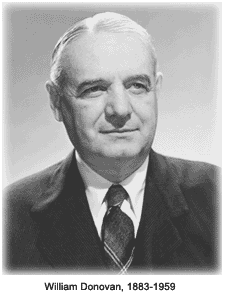 In July 1941, six months before the attack, Roosevelt recruited William Donovan, a New York attorney, to devise America's first peacetime intelligence organization. Donovan was appointed to the role of Coordinator of Information (COI) and director of the nondepartmental organization.
The attack on Pearl Harbor suggested the role of COI should be re-thought. The result was the creation, in June 1942, of the Office of Strategic Services (OSS), which would gather and analyze information requested by the Joint Chiefs of Staff and "conduct special operations not assigned to other agencies."
The OSS, however, was not granted total authority over global matters. The Secret Intelligence Service (SIS), a branch of the FBI, had been created in 1940 to take responsibility for intelligence work in Latin America. That was viewed by some as counterproductive to the goal of centralizing the entire intelligence community of foreign affairs.
When World War II ended, Harry S. Truman, who ascended to the presidency after Roosevelt's death in April 1945, saw no reason for the OSS to continue operations, and he officially disbanded the unit in October of that year. In actuality, however, most of the counterintelligence functions were transferred back to the State and War departments, though to a lesser degree.
Truman, however, soon realized that a centralized system for intelligence was needed after all, if the United States were to keep tabs on the Soviet Union and their own intelligence arm, the KGB. He sifted comments from a number of strategic agencies, including the State Department and the FBI. That led, in January 1946, to the creation of the Central Intelligence Group (CIG). The group was responsible for "providing strategic warning and conducting clandestine activities."
In July 1941, six months before the attack, Roosevelt recruited William Donovan, a New York attorney, to devise America's first peacetime intelligence organization. Donovan was appointed to the role of Coordinator of Information (COI) and director of the nondepartmental organization.
The attack on Pearl Harbor suggested the role of COI should be re-thought. The result was the creation, in June 1942, of the Office of Strategic Services (OSS), which would gather and analyze information requested by the Joint Chiefs of Staff and "conduct special operations not assigned to other agencies."
The OSS, however, was not granted total authority over global matters. The Secret Intelligence Service (SIS), a branch of the FBI, had been created in 1940 to take responsibility for intelligence work in Latin America. That was viewed by some as counterproductive to the goal of centralizing the entire intelligence community of foreign affairs.
When World War II ended, Harry S. Truman, who ascended to the presidency after Roosevelt's death in April 1945, saw no reason for the OSS to continue operations, and he officially disbanded the unit in October of that year. In actuality, however, most of the counterintelligence functions were transferred back to the State and War departments, though to a lesser degree.
Truman, however, soon realized that a centralized system for intelligence was needed after all, if the United States were to keep tabs on the Soviet Union and their own intelligence arm, the KGB. He sifted comments from a number of strategic agencies, including the State Department and the FBI. That led, in January 1946, to the creation of the Central Intelligence Group (CIG). The group was responsible for "providing strategic warning and conducting clandestine activities."
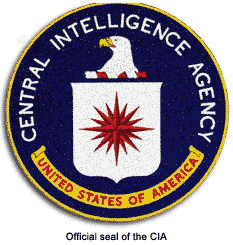 About two years later, another restructuring of the intelligence department occurred. The National Security Act of 1947 established the National Security Council (NSC) and the Central Intelligence Agency (CIA). The CIA was to “coordinate the nation’s intelligence activities and correlate, evaluate, and disseminate intelligence which affects national security and to perform other duties and functions related to intelligence as the NSC might direct.” The head of the CIA was given the title of Director of Central Intelligence, or DCI, and is appointed by the president.
The CIA in world affairs
About two years later, another restructuring of the intelligence department occurred. The National Security Act of 1947 established the National Security Council (NSC) and the Central Intelligence Agency (CIA). The CIA was to “coordinate the nation’s intelligence activities and correlate, evaluate, and disseminate intelligence which affects national security and to perform other duties and functions related to intelligence as the NSC might direct.” The head of the CIA was given the title of Director of Central Intelligence, or DCI, and is appointed by the president.
The CIA in world affairs
Since its inception, rumor and innuendo have obscured the CIA and its operations in a shroud of mystery. Accusations about the agency have included conspiracies to assassinate foreign leaders unsympathetic to western wishes for democratic rule by the people of the country in question. The new vocabulary Those living in the gray area developed an extensive new vocabulary to describe the various intricacies and nuances of their operations. The CIA's own definition of "covert action" is "any clandestine or secret activities designed to influence foreign governments, events, organizations, or persons in support of U.S. foreign policy conducted in such manner that the involvement of the U.S. Government is not apparent." Other "buzz words" and phrases include:
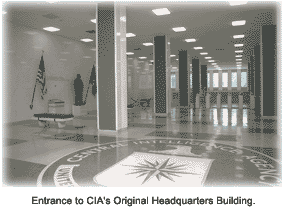 Proprietaries were legitimate businesses owned by the CIA and used as a base for espionage and covert operations; Radio Free Europe, Air America, Air Asia, and Civil Air Transport are examples.
Propaganda is “intended to undermine the beliefs, perceptions, and value systems of the people under the rule of the adversary government.” An example of black propaganda occurred when, in October 1964, the CIA circulated an anti-Islamic pamphlet in Egypt, making it seem as though the Soviets had done it.
Plausible deniability was an action designed to keep the president of the United States out of the loop regarding any covert activity that may have gone wrong, even though the president knew of the general shape of the plan.
It works in the following way: A president indirectly communicates “his desire for a sensitive operation” to personnel in a meeting. That creates a “blank check” for CIA leaders who are determined to carry out the president’s wishes. Instead of keeping the president informed of the progress of the action, however, the information is kept internalized.
An example of how the concept works is the Iran-Contra Affair of the 1980s. It was discovered that Lt. Colonel Oliver North, and others, were funneling the proceeds of arms sales to Iran to the Contra rebels in Nicaragua who were attempting to oust the left-wing Sandinistas. It was thought by those conducting the operation, that then president Ronald Reagan didn’t know of any wrongdoing and could “plausibly deny” any such knowledge to the public.
The intense media and congressional feeding frenzy eventually got to the truth of the matter —Reagan did, in fact, know about the scandal and couldn’t convince the public that he had no knowledge of it.
To “precipitate conditions leading to the assassination of (target),” the CIA would attempt to undermine the government of a Third World (underdeveloped) country that was thought to be sympathetic to communism. The propaganda barrage would attempt to sway the masses into a state of revolt, which would then lead to a military coup and resultant deaths of the country's leader and his supporters.
Proprietaries were legitimate businesses owned by the CIA and used as a base for espionage and covert operations; Radio Free Europe, Air America, Air Asia, and Civil Air Transport are examples.
Propaganda is “intended to undermine the beliefs, perceptions, and value systems of the people under the rule of the adversary government.” An example of black propaganda occurred when, in October 1964, the CIA circulated an anti-Islamic pamphlet in Egypt, making it seem as though the Soviets had done it.
Plausible deniability was an action designed to keep the president of the United States out of the loop regarding any covert activity that may have gone wrong, even though the president knew of the general shape of the plan.
It works in the following way: A president indirectly communicates “his desire for a sensitive operation” to personnel in a meeting. That creates a “blank check” for CIA leaders who are determined to carry out the president’s wishes. Instead of keeping the president informed of the progress of the action, however, the information is kept internalized.
An example of how the concept works is the Iran-Contra Affair of the 1980s. It was discovered that Lt. Colonel Oliver North, and others, were funneling the proceeds of arms sales to Iran to the Contra rebels in Nicaragua who were attempting to oust the left-wing Sandinistas. It was thought by those conducting the operation, that then president Ronald Reagan didn’t know of any wrongdoing and could “plausibly deny” any such knowledge to the public.
The intense media and congressional feeding frenzy eventually got to the truth of the matter —Reagan did, in fact, know about the scandal and couldn’t convince the public that he had no knowledge of it.
To “precipitate conditions leading to the assassination of (target),” the CIA would attempt to undermine the government of a Third World (underdeveloped) country that was thought to be sympathetic to communism. The propaganda barrage would attempt to sway the masses into a state of revolt, which would then lead to a military coup and resultant deaths of the country's leader and his supporters.
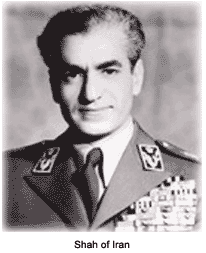 Operations: the good, the bad, and the ugly
Two of the earliest significant CIA operations occurred in Iran in 1953 when the established government was overthrown (because of the British notion that Iran was about to nationalize its oil industry), and the Shah of Iran was reinstated from exile. The other was in Guatemala in 1954, where Operation PBSuccess was organized to oust a president, Jacobo Arbenz Guzman, who was sympathetic to the communists, in favor of pro-west candidate Carlos Enrique Castill Armas.
Other than its incipient involvement in South Vietnam following the First Indochina War in 1954, those two “successes” for the CIA were followed by a period of little activity in the western hemisphere until Fidel Castro, a left-leaning rebel who led a revolt against the government of Fulgencio Batista, took control of Cuba in 1959.
That development prompted the U.S. and the CIA to develop a plan to replace Castro with a pro-American figure. In 1961, the plan, now known as the Bay of Pigs Invasion, was initiated. Due to poor communications between the ground force and the air support arm of the plan, the invasion was repelled and resulted in the humiliation of the United States and the CIA on a worldwide stage.
Following the Bay of Pigs fiasco, the CIA turned its attention to the Cuban buildup of ballistic missiles. With the aid of Russia and Czechoslovakia, Cuba began to install missiles for “defensive purposes.” In October 1962, during a CIA-owned U-2 flyover of San Cristobal, it was discovered that nine missile sites were being loaded with Russian SS-4s and SS-5s, which had a range of about 2,500 miles — far enough to reach nearly every major city in the U.S.
That discovery led to the Cuban Missile Crisis.
The CIA’s involvement in Southeast Asia began in the mid-1950s when they coordinated the “Secret Army” in Laos to fight the “Secret War” against the communist Pathet Lao and North Vietnamese as a part of the Vietnam War. The fear was that if Laos fell to left-wing forces, Thailand would be next and the whole of Southeast Asia would fall to The Domino Theory. The effort was assisted by the CIA’s own fleet of aircraft known as “Air America.”
In Latin America in 1973, the CIA aided Chilean nationalists in their fight to oust leftist Salvador Allende. Various sources report that Allende was either killed by the coup leaders or committed suicide before they got there.
The Church Committee
The wild and unbridled covert campaigns of the CIA would come under microscopic scrutiny, however, by the “Senate Select Committee to Study Governmental Operations with Respect to Intelligence Activities,” a.k.a. the Church Committee, so named after its chairman, Frank Church of Idaho.
Operations: the good, the bad, and the ugly
Two of the earliest significant CIA operations occurred in Iran in 1953 when the established government was overthrown (because of the British notion that Iran was about to nationalize its oil industry), and the Shah of Iran was reinstated from exile. The other was in Guatemala in 1954, where Operation PBSuccess was organized to oust a president, Jacobo Arbenz Guzman, who was sympathetic to the communists, in favor of pro-west candidate Carlos Enrique Castill Armas.
Other than its incipient involvement in South Vietnam following the First Indochina War in 1954, those two “successes” for the CIA were followed by a period of little activity in the western hemisphere until Fidel Castro, a left-leaning rebel who led a revolt against the government of Fulgencio Batista, took control of Cuba in 1959.
That development prompted the U.S. and the CIA to develop a plan to replace Castro with a pro-American figure. In 1961, the plan, now known as the Bay of Pigs Invasion, was initiated. Due to poor communications between the ground force and the air support arm of the plan, the invasion was repelled and resulted in the humiliation of the United States and the CIA on a worldwide stage.
Following the Bay of Pigs fiasco, the CIA turned its attention to the Cuban buildup of ballistic missiles. With the aid of Russia and Czechoslovakia, Cuba began to install missiles for “defensive purposes.” In October 1962, during a CIA-owned U-2 flyover of San Cristobal, it was discovered that nine missile sites were being loaded with Russian SS-4s and SS-5s, which had a range of about 2,500 miles — far enough to reach nearly every major city in the U.S.
That discovery led to the Cuban Missile Crisis.
The CIA’s involvement in Southeast Asia began in the mid-1950s when they coordinated the “Secret Army” in Laos to fight the “Secret War” against the communist Pathet Lao and North Vietnamese as a part of the Vietnam War. The fear was that if Laos fell to left-wing forces, Thailand would be next and the whole of Southeast Asia would fall to The Domino Theory. The effort was assisted by the CIA’s own fleet of aircraft known as “Air America.”
In Latin America in 1973, the CIA aided Chilean nationalists in their fight to oust leftist Salvador Allende. Various sources report that Allende was either killed by the coup leaders or committed suicide before they got there.
The Church Committee
The wild and unbridled covert campaigns of the CIA would come under microscopic scrutiny, however, by the “Senate Select Committee to Study Governmental Operations with Respect to Intelligence Activities,” a.k.a. the Church Committee, so named after its chairman, Frank Church of Idaho.
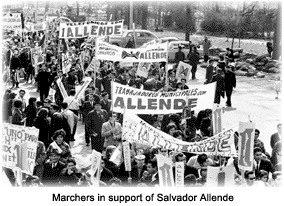 What was uncovered during the sessions shocked even the most knowledgeable of government officials.
Cryptic “projects,” “operations,” and “programs,” were code names for covert operations.
The code names included “Project NKNAOMI,” which established a covert support base. “Project MKULTRA” was used to develop chemical, biological, and radiological weapons.
“Project Bluebird” dabbled in mind control — some procedures were used on CIA agents, or “case workers,” some with the agent’s permission, some without. The project was later renamed “Artichoke,” to expand the scope of the experiments.
Those experiments had code names, as well. Projects “Chatter,” “Third Chance,” and “Derby Hat” delved into “truth serums,” LSD, and other mind-altering chemicals.
The CIA’s “Operation Mongoose” was a plan to assassinate Castro as early as 1959, shortly after Castro came to power.
The “Phoenix Program,” which operated from 1962 to 1965, was intended to help South Vietnamese officials recruit and train police forces and paramilitary units for the defense of their country.
The aftermath
Though controversies continue to plague the agency, the CIA continues to “battle the forces of evil.”
Following the September 11, 2001, attack on the World Trade Center and the Pentagon, DCI George Tenet disclosed a “top secret” document dubbed the “Worldwide Attack Matrix,” which revealed the CIA’s plan to combat terrorist activities in 80 countries. The activities were quoted to be from “routine propaganda to lethal covert action in preparation for military attacks.”
Criticisms of the agency
The CIA has taken criticism for a number of failures, notably its ineffective intelligence gathering. They include allowing a double agent, Aldrich Ames, to infiltrate the organization to the extent of gaining a high-level security clearance. Failing to predict the fall of the Soviet Union, the Trade Center and Pentagon disasters, India’s nuclear tests, and the agency’s presentation of data describing Iraq’s stockpile of WMD as unsupportable by available intelligence, are among the most recent faultfindings.
What was uncovered during the sessions shocked even the most knowledgeable of government officials.
Cryptic “projects,” “operations,” and “programs,” were code names for covert operations.
The code names included “Project NKNAOMI,” which established a covert support base. “Project MKULTRA” was used to develop chemical, biological, and radiological weapons.
“Project Bluebird” dabbled in mind control — some procedures were used on CIA agents, or “case workers,” some with the agent’s permission, some without. The project was later renamed “Artichoke,” to expand the scope of the experiments.
Those experiments had code names, as well. Projects “Chatter,” “Third Chance,” and “Derby Hat” delved into “truth serums,” LSD, and other mind-altering chemicals.
The CIA’s “Operation Mongoose” was a plan to assassinate Castro as early as 1959, shortly after Castro came to power.
The “Phoenix Program,” which operated from 1962 to 1965, was intended to help South Vietnamese officials recruit and train police forces and paramilitary units for the defense of their country.
The aftermath
Though controversies continue to plague the agency, the CIA continues to “battle the forces of evil.”
Following the September 11, 2001, attack on the World Trade Center and the Pentagon, DCI George Tenet disclosed a “top secret” document dubbed the “Worldwide Attack Matrix,” which revealed the CIA’s plan to combat terrorist activities in 80 countries. The activities were quoted to be from “routine propaganda to lethal covert action in preparation for military attacks.”
Criticisms of the agency
The CIA has taken criticism for a number of failures, notably its ineffective intelligence gathering. They include allowing a double agent, Aldrich Ames, to infiltrate the organization to the extent of gaining a high-level security clearance. Failing to predict the fall of the Soviet Union, the Trade Center and Pentagon disasters, India’s nuclear tests, and the agency’s presentation of data describing Iraq’s stockpile of WMD as unsupportable by available intelligence, are among the most recent faultfindings.